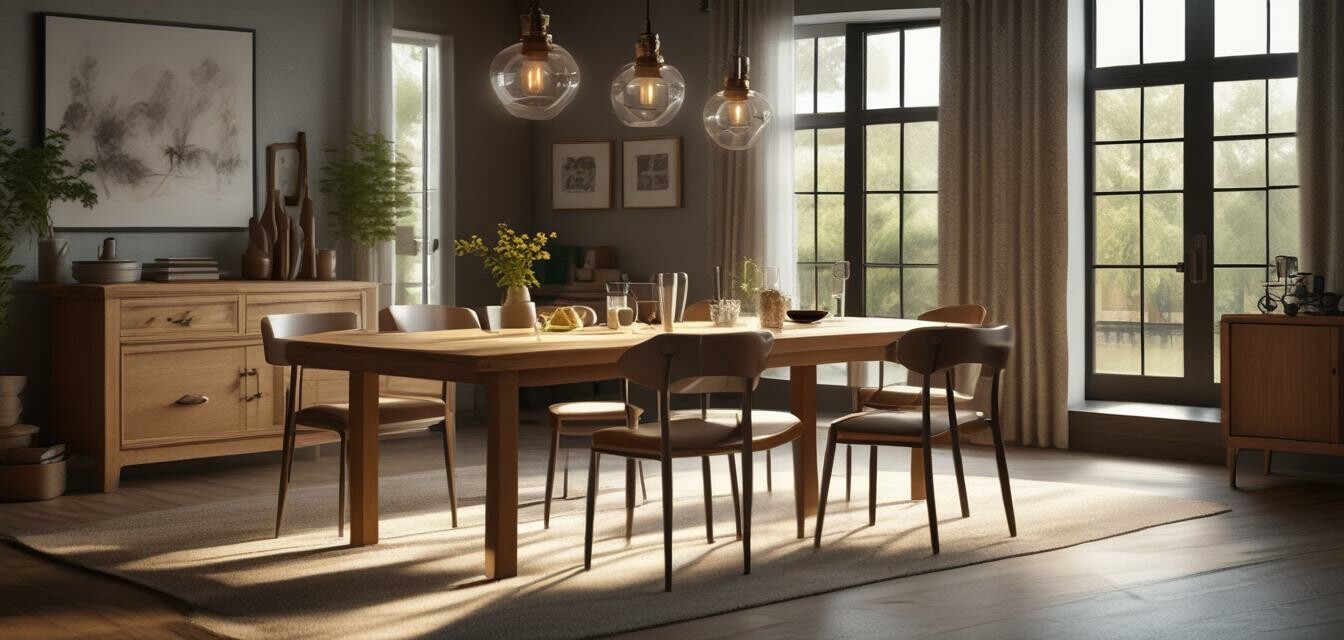
Balancing Color and Texture with Solid Oak Dining Tables
- Solid oak tables add warmth and durability to your dining space.
- Choosing complementary colors can enhance the beauty of oak furniture.
- Texture plays a key role in creating an inviting atmosphere.
- Accessory choices can amplify the overall design aesthetic.
- Utilizing different materials in decor helps strike the perfect balance.
Creating an inviting and cohesive atmosphere in your dining area is a crucial aspect of home decor. Solid oak dining tables provide the perfect foundation due to their natural beauty, durability, and timeless designs.
The natural beauty of solid oak
Solid oak wood has unique grains and tones that add character to any space. Its warm hues can range from light shades to darker, richer colors, making it versatile in various design styles—from rustic to modern. To fully appreciate the magnificence of oak, it’s essential to balance colors and textures throughout your decor.
Choosing complementary colors
When selecting colors for your dining area, consider the following strategies:
- Color wheel: Use the color wheel to find complementary colors that enhance each other.
- Neutral tones: Pair oak tables with neutral shades like white, beige, and grey to allow the wood to be the focal point.
- Accent colors: Incorporate accent colors through decor items, such as chairs, table settings, and artwork.
Color combinations to consider
| Base Color | Complementary Color | Accent Color |
|---|---|---|
| Light Oak | Soft White | Soft Blue |
| Golden Oak | Warm Beige | Terracotta |
| Dark Oak | Charcoal Grey | Burnt Orange |
Incorporating textures
Texture enriches the visual appeal of a room. Here are some key textures to consider when decorating with a solid oak dining table:
- Fabric: Choose chair cushions or table runners made of different materials like linen or cotton.
- Rugs: A textured rug can create warmth underfoot and can complement the wood finish.
- Natural elements: Incorporate plants, decorative bowls, or wooden accessories to enhance the organic feel.
Textures to mix and match
| Texture Type | Suggested Materials |
|---|---|
| Soft | Fabrics (cotton, linen) |
| Hard | Glass, metal accents |
| Natural | Wood, stone elements |
Accessorizing your dining area
Accessorizing plays a significant role in achieving a well-balanced look. Here are some tips:
- Centerpieces: Use a stylish vase or a bowl with seasonal decor to draw attention.
- Tableware: Invest in tableware that complements both the textures and colors of the room.
- Lighting: Select pendant lights that match the style of your solid oak table while adding depth to the decor.
Creating a cohesive look
To create a cohesive look, ensure that all elements in your dining area harmonize with your solid oak table. Here are simple steps to achieve this:
- Assess your current decor to identify primary colors and textures.
- Decide on a color palette that includes oak as a base.
- Add textures that either contrast or complement the oak finish.
- Incorporate accessories that tie everything together.
- Lastly, step back and evaluate the entire space for balance and harmony.
Tips for beginners
- Start with neutral base colors before layering in other hues.
- Experiment with small decor items to see what works best before making larger purchases.
- Don’t shy away from mixing different styles, as long as the color scheme is consistent.
- Consider seasonal changes; swapping out decor regularly can refresh your dining area.
Pros
- Adds natural warmth to your home.
- Highly durable and long-lasting.
- Timeless design that complements various styles.
Cons
- Can be heavy and difficult to move.
- Requires regular maintenance to keep it looking its best.
- May be prone to scratches without proper care.
Conclusion
Balancing color and texture when styling your dining area around a solid oak table can elevate your space immensely. By choosing complementary colors, incorporating varying textures, and appropriately accessorizing, you can create a beautiful and inviting atmosphere. Remember that your dining area should reflect your personal taste while offering warmth and style, fostering memorable gatherings for years to come.
Explore more on home decor inspiration
To find more creative ideas for incorporating solid oak tables into your home decor, feel free to explore our other articles in the Home Decor Inspiration category.